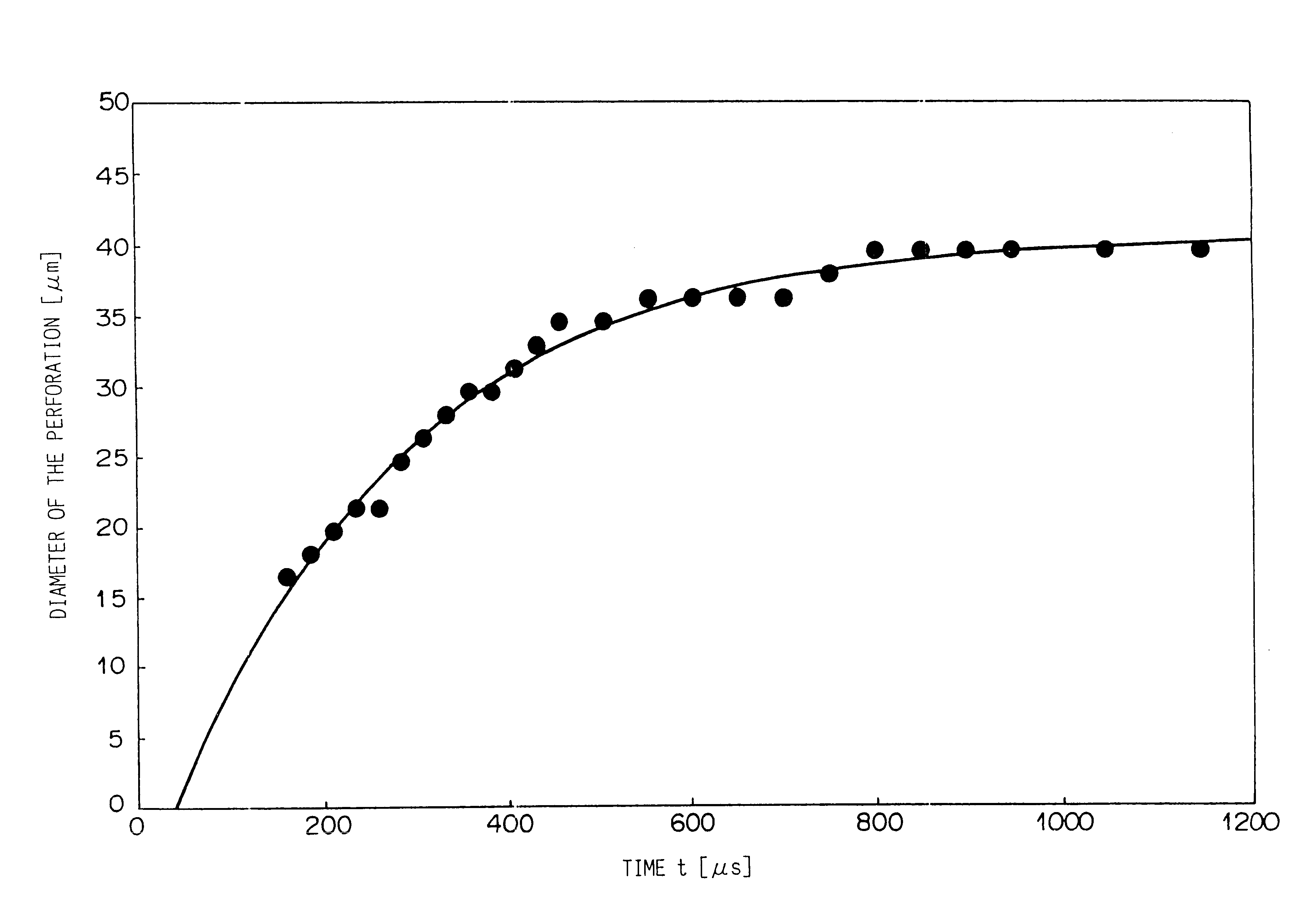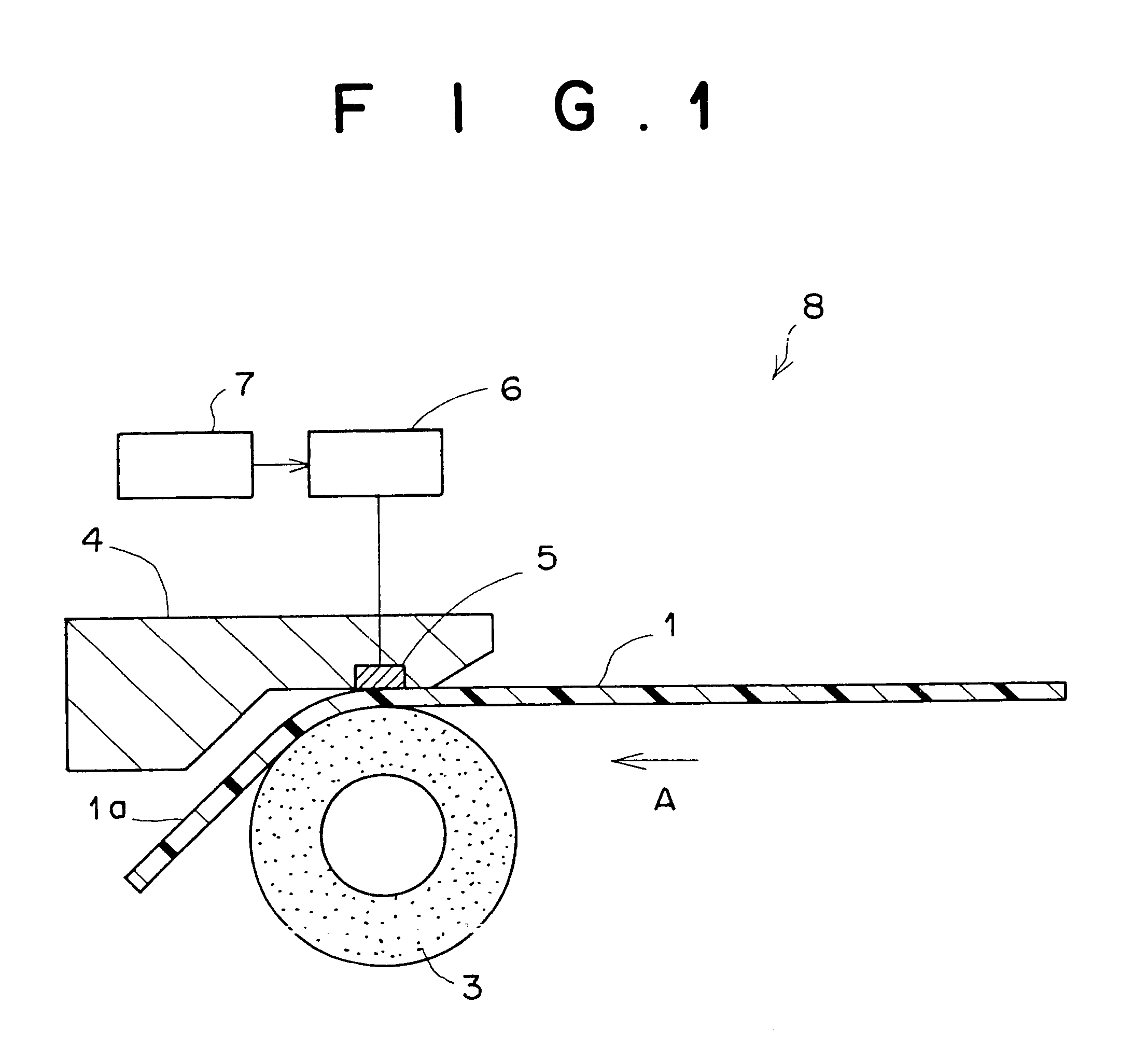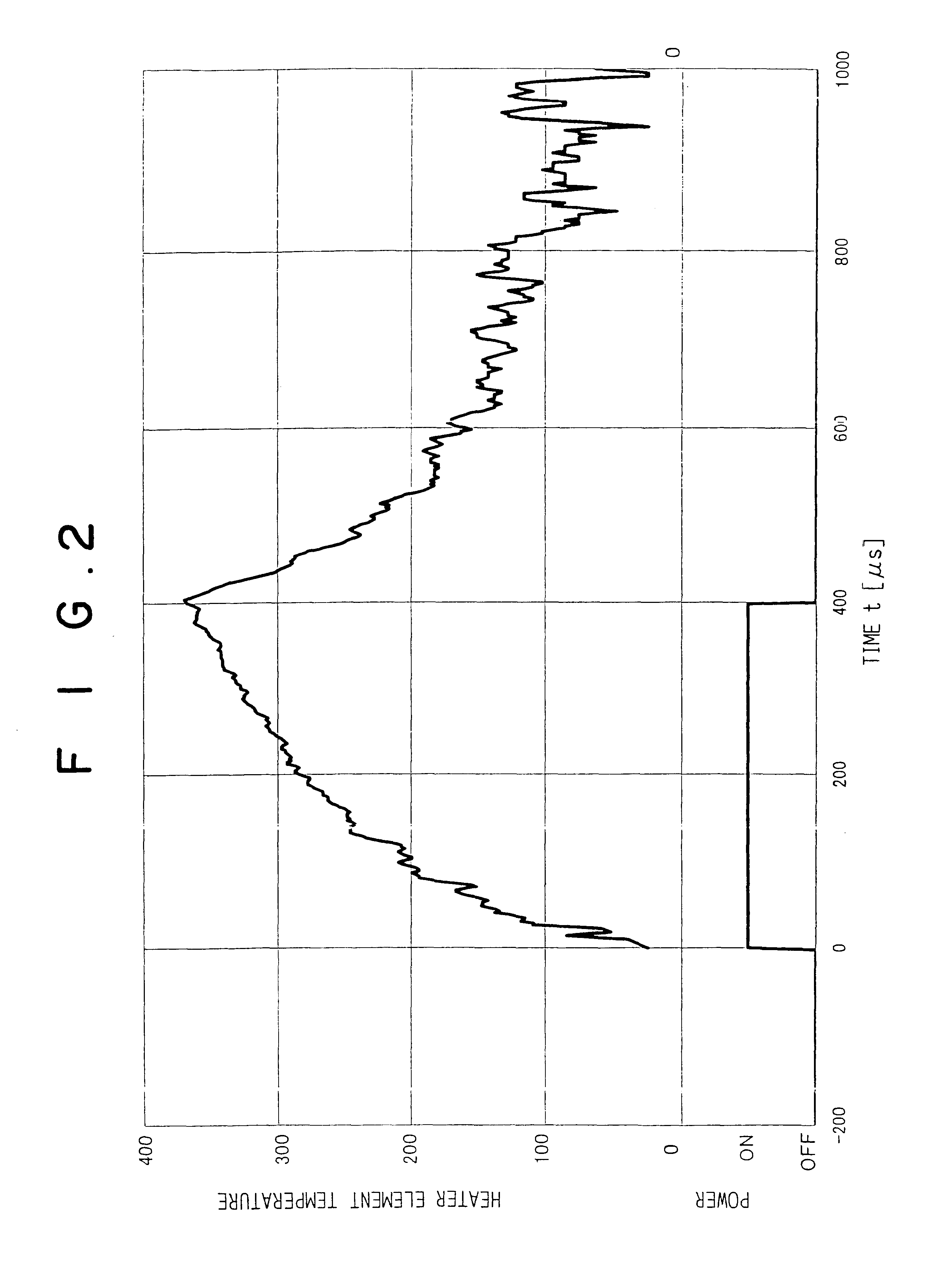Further, the measurement is static and does not reflect the actual perforation.
Thus the reported heat shrinkage factor or heat shrinkage stress does not conform to the actual perforation.
Accordingly, the properties of the film concerning to the degree to which the perforations are discrete by pixel and the shape of the perforations is stabilized are generally incompatible with the sensitivity to perforation of film and the speed at which the film is perforated.
Further, it is difficult to read from the TMA data the performance of the film representing the perforating speed, the stability of the shape of perforations and the like except the sensitivity to perforation.
Even about the sensitivity to perforation, it is difficult to estimate the difference in the sensitivity to perforation between film samples which are slightly different from each other, for instance, in TMA curve since it is actually impossible to prepare a variety of film samples which are different from each other in one or more particular factor such as the TMA curve with the other factors held to be the same.
Accordingly, when a suitable kind of resin film is to be selected, stencils must be actually made using a variety of resin film samples, which adds to the development cost.
Accordingly, it has been very difficult to know, without experience and sense, how the physical properties of the resin film should be changed on the basis of the result of experiment in order to obtain a desirable form of perforation, which has been made difficult development of new products and improvement of the performance of the products.
Unsatisfactory design of the performance of the resin film can result in the case where the sensitivity to perforation and perforating speed are too poor to obtain a high-resolution stencil under a practical condition though the perforations are discrete and substantially uniform in shape or in the case where the perforations are not discrete and not uniform in shape though the sensitivity to perforation and perforating speed are satisfactory.
Thus, it has been impossible to develop, on the basis of conventional data experimentally obtained, a method of and an apparatus for making a stencil by thermally perforating a
thermoplastic resin film of heat-sensitive stencil material, and a thermoplastic resin film for heat-sensitive stencil material in which demands for uniformity in shape of perforations, sensitivity to perforation and perforating speed are all satisfied.
When supply of energy to the heat source is
cut before the quotient obtained by dividing by the energizing time a
maximum diameter of the perforation at the time at which supply of energy to the heat source is cut reaches 0.015 m / s, sensitivity to perforation deteriorates and the perforations cannot be formed at a satisfactory speed.
Whereas, when supply of energy to the heat source is cut after the quotient obtained by dividing by the energizing time a
maximum diameter of the perforation at the time at which supply of energy to the heat source is cut exceeds 0.23 m / s, the perforations cannot be discrete and at the same time the shape of the perforations becomes unstable.
Further, in this case, since the heat source is heated to a high temperature, the heat source is apt to be damaged.
When supply of energy to the heat source is cut before the quotient reaches 0.06 m / s, sensitivity to perforation and perforating speed are unsatisfactory, whereas when supply of energy to the heat source is cut after the quotient exceeds 0.075 m / s, high performance cannot be realized in discreteness of the perforations and stability in shape of the perforations.
When the mean enlarging speed is smaller than 0.015 m / s, sensitivity to perforation deteriorates and the perforations can not be formed at a satisfactory speed.
Whereas, when the mean enlarging speed is larger than 0.23 m / s, the perforations cannot be discrete and at the same time the shape of the perforations becomes unstable.
Further, in this case, since the heat source is heated to a high temperature, the heat source is apt to be damaged.
When the mean enlarging speed is smaller than 0.06 m / s, sensitivity to perforation and perforating speed are unsatisfactory, whereas when the mean enlarging speed is larger than 0.075 m / s, high performance cannot be realized in discreteness of perforations and stability in shape of the perforations.
This is because it is very difficult to observe the state of perforation and to measure the
diameter and / or the area of the perforation in a state where the thermoplastic film is laminated on the porous support sheet.
When the
melting point is higher than 240.degree. C., high sensitivity to perforation cannot be obtained, whereas when the
melting point is lower than 150.degree. C., the thermal dimensional stability of the film deteriorates and the film curls during manufacture of the stencil or during storage of the stencil, whereby printing
image quality becomes unsatisfactory.
 Login to View More
Login to View More 









